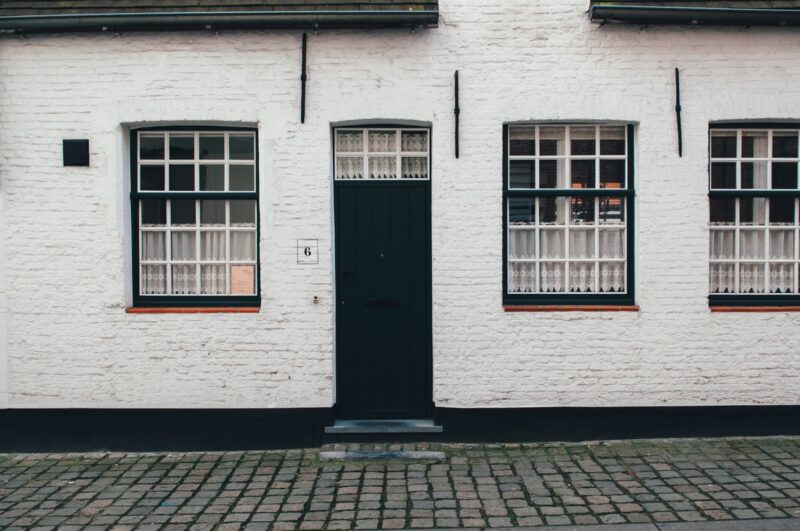Choosing the right exterior paint colour for your home is an exciting yet daunting task. The colour you choose can greatly impact your home’s curb appeal and overall aesthetic. With so many options available, it’s important to consider a few key factors before making your final decision. In this article, we’ll guide you through the process of choosing the best exterior paint colour that will make your home stand out in the neighbourhood.

Consider the Architecture and Style
The architecture and style of your home play a significant role in determining the most suitable paint colour. Different architectural styles have their own colour palettes that enhance their unique features. For example, a Victorian-style home may look stunning in vibrant and rich colours, while a modern minimalist design may benefit from a more subdued and neutral palette.
To help you find the best exterior paint colour for your home based on the architecture and style, here are some tips and examples for some common types of houses:
- Modern: Modern architecture is characterized by clean lines, geometric shapes, and minimal ornamentation. It often uses materials such as concrete, steel, and glass, and favours neutral or monochromatic colours. To choose the best exterior paint colour for a modern house, you can either match the colour of the materials, such as grey for concrete or black for steel, or create a contrast with a bright or vibrant colour, such as red, blue, or green.
- Victorian: Victorian architecture is known for its elaborate and ornate details, such as gables, turrets, bay windows, and decorative trim. It often uses wood or brick as the main material and favours rich and dark colours, such as burgundy, navy, or forest green.
- Italianate: Italianate architecture is inspired by the villas and palaces of Italy, and features elements such as low-pitched roofs, arched windows, and decorative brackets. It often uses stone or stucco as the main material and favours warm and earthy colours, such as beige, brown, or olive.
Assess the Surrounding Environment
Take a moment to observe the surrounding environment of your home. Consider the landscape, neighbouring houses, and any natural elements such as trees or bodies of water. You want your home to harmonize with its surroundings, so take inspiration from the colours found in nature. A beachfront property might look stunning in shades of blue, while a home nestled in a forest could benefit from earthy tones.
Think About the Mood You Want to Create

The colour of your home can evoke different moods and emotions. Before choosing a paint colour, think about the atmosphere you want to create. Do you want your home to feel warm and inviting? Consider shades of yellow or beige. If you prefer a more modern and sleek look, greys and cool blues might be the way to go. Don’t be afraid to experiment with different colour swatches to find the perfect mood for your home.
Test the Colors
Once you have a few colours in mind, it’s time to test them out. Paint swatches on a small section of your home’s exterior and observe how they look in different lighting conditions. Natural light can greatly affect the appearance of a colour, so make sure to test the swatches at different times of the day. Additionally, consider how the colour interacts with other elements of your home, such as the roof, windows, and landscaping.
Consider the Neighborhood
While you want your home to stand out, it’s also important to consider the overall aesthetic of your neighbourhood. Take a stroll around the area and note the colour schemes of the neighbouring houses. You don’t want your home to clash or look out of place. Instead, aim for a colour that complements the surrounding homes while still allowing yours to have its own unique charm.
Don’t Forget About Maintenance
When choosing an exterior paint colour, it’s essential to consider the maintenance required. Darker colours tend to fade faster and show dirt more easily, while lighter colours may require more frequent touch-ups. Take into account the climate in your area and the amount of time and effort you’re willing to invest in maintaining the appearance of your home.
Conclusion
Choosing the best exterior paint colour for your home is a decision that requires careful thought and consideration. By taking into account the architecture, surrounding environment, desired mood, and neighbourhood aesthetic, you can find a colour that will enhance your home’s curb appeal and make it the envy of the block. Remember to test the colours and consider the maintenance required before making your final choice. With a little creativity and planning, you can transform your home into a true masterpiece.
FAQs
Personal Taste: Consider your personal preferences and style.
Neighbourhood Aesthetics: Observe neighbouring homes and landscapes to decide whether you want your house to blend in or stand out.
Interior Coordination: Choose colours that complement your interior design for a cohesive feel.
Architectural Style: Reflect your home’s architectural features in your colour choice.
Coordinate Colors: Ensure your exterior paint complements the interior palette.
First Impression: The exterior sets the narrative, so choose colours that resonate with your home’s overall vibe.
Visible Views: Consider indoor views of the exterior (e.g., porch ceiling) when selecting colours.
Modern Farmhouse Look: White exteriors with black and metal accents.
Moody Shades: Dark colours like black or deep greys for a contemporary touch.
Off-white/Cream: A timeless neutral.
White: Clean and fresh.
Light Gray: Subtle and versatile.
Light Brown: Warm and inviting.
Medium Blue: Adds a touch of colour.
Sample Swatches: Test paint swatches on your home’s exterior to visualize the result.
Consider Lighting: Observe how colours appear in different lighting conditions.
Front Entrance: Make your front door a focal point to set the tone for your entire.











